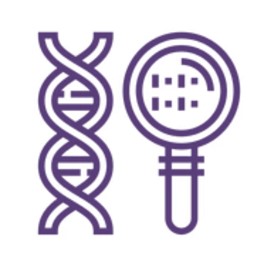Ornithine Transcarbamylase Deficiency (OTCD)
The main characteristic of ornithine transcarbamylase deficiency (OTCD) is the genetically determined lack of functionality of the OTC enzyme, which is vital for nitrogen waste removal from the body through the urea cycle. In our continuous effort to contribute to the understanding of rare diseases, our company is pleased to offer comprehensive services that cover the needs of researchers and scientists alike.
Overview of OTCD
OTCD is reported to have a birth prevalence of around 1 in 14000 to 1 in 80000 live births, which reflects the distinctive features of the X-linked condition. While it is predominantly a male disorder, females are not immune to its effects. OTCD mainly affects the liver leading to an increased blood concentration of ammonia which is a toxic compound. Its severity is heterogeneous with the most extreme form being neonatal-onset with severe symptoms, while some late-onset forms may be mild or even asymptomatic.
 Fig.1 Mitochondrial OTC in its metabolic context in liver and intestine. (Couchet, M., et al., 2021)
Fig.1 Mitochondrial OTC in its metabolic context in liver and intestine. (Couchet, M., et al., 2021)Pathogenesis of OTCD
According to the available information, OTCD is associated with over 500 reported mutations in the OTC gene located on the short arm of the X chromosome Xp21.1. The human OTC gene encoded on X chromosome is associated with OTC deficiency, which leads to scarce or completely absent functional OTC enzyme activity. The result is an increased concentration of ammonia in the blood, which if untreated may lead to hyperammonemia and its neurologic damage, liver injury, and some potentially life-threatening situations.
 Fig.2 Structure of human OTC. (Couchet, M., et al., 2021)
Fig.2 Structure of human OTC. (Couchet, M., et al., 2021)Diagnostics Development of OTCD

Biochemical Tests
Measurement of ammonia and other metabolites, including orotic acid and glutamine, which are often increased in the affected individuals.

Gene Detection
Through the use of DNA, performing mutation analysis of OTC genes helps in definitive clinical diagnosis and determination of particular polymorphisms.
Therapeutics Development of OTCD
| Types | Names | Mechanism of Action | Targets | Research Phase |
|---|---|---|---|---|
| Gene therapy | AAV8-based OTC delivery | Provide successful OTC DNA and RNA delivery | OTC | Phase III trials |
| AAVLK03.hOTC | Increase the OTC enzyme activity | OTC | Phase I/II trials | |
| LNP hOTC mRNA | Lipid nanoparticle to deliver OTC mRNA | OTC | Phase I/II trials | |
| Genome editing | Corrected the mutation of OTC | OTC | Preclinical research | |
| Microbiological therapy | Synb1020 | An engineered E coli Nissle strain | Ammonia | Phase I/II trials |
| Supplements | Arginine / citrulline | Support the urea cycle and promote ammonia detoxification | Ammonia | Approved |
Our Services
The novel approach that we take is made possible through the animal model and therapeutic development platform. With the broad range of knowledge and resources available, we bring together a team of geneticists, molecular biologists, biochemists, and rare disease experts specializing in OTCD. This allows us to integrate all aspects of research and discovery of OTCD.
Therapy Development Platforms
Animal Models of OTCD
To develop a proper understanding of the intricate details of OTCD and its mechanisms, animal models are essential. Our company offers a variety of unique animal models which can be used to study the pathogenesis of OTCD, test possible therapeutic solutions, and investigate the effects of the changes in genes and environment on the development and progression of the disease.

Researchers have developed new animal models containing mutations in the OTC gene using various gene editing technologies. These models, which are characterized by hyperammonemia and liver failure, bear resemblance to human OTCD.
Why Choose Us
We focus on understanding, diagnosing, and treating OTCD through the acceleration of scientific advancements, which can be achieved by pharmacokinetic studies and drug safety evaluations.
If you are seeking reliable support and cutting-edge resources for your research endeavors, we invite you to engage with our team and explore the possibilities for collaboration. Contact us today to learn more about our services and how we can empower your research goals.
References
- Couchet, Morgane et al. "Ornithine Transcarbamylase - From Structure to Metabolism: An Update." Frontiers in physiology 12 (2021): 748249.
- Seker Yilmaz, Berna, and Paul Gissen. "Genetic Therapy Approaches for Ornithine Transcarbamylase Deficiency." Biomedicines 11.8 (2023): 2227.
All of our services and products are intended for preclinical research use only and cannot be used to diagnose, treat or manage patients.
